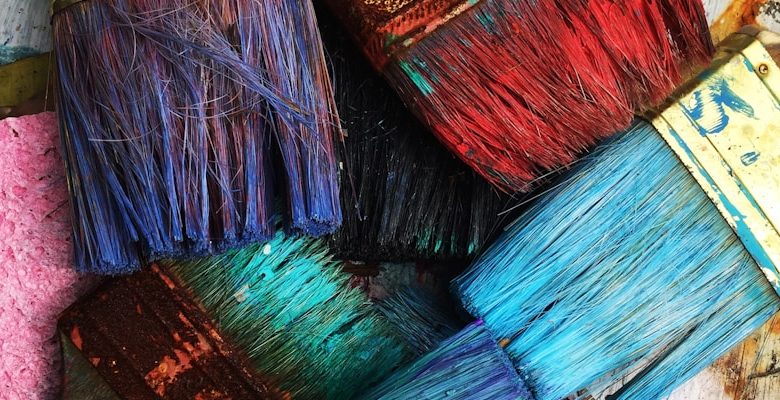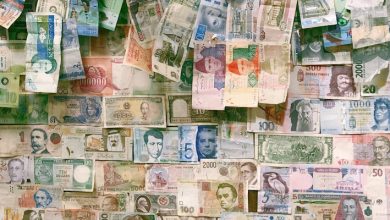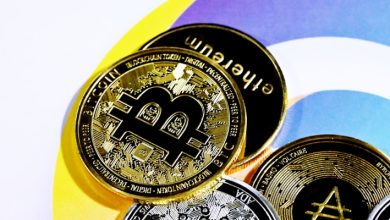The Impact of NFTs on the Art and Creative Industries

- Understanding NFTs and their role in the art world
- Exploring how NFTs are revolutionizing the way artists sell and promote their work
- The rise of digital art in the age of NFTs
- Challenges and opportunities for traditional artists in the NFT space
- NFTs as a tool for empowering underrepresented artists
- The future of art collecting and ownership with NFTs
Understanding NFTs and their role in the art world
NFTs, or non-fungible tokens, have taken the art world by storm in recent years. These digital assets represent ownership of a unique piece of art or collectible using blockchain technology. NFTs have opened up a world of possibilities for artists and collectors alike, allowing for the creation and sale of digital art in a way that was previously impossible.
One of the key benefits of NFTs is their ability to provide artists with a new revenue stream. By selling their work as NFTs, artists can reach a global audience and connect directly with collectors, cutting out the middleman and potentially earning more for their creations. This has democratized the art world, allowing emerging artists to gain recognition and financial success without the need for gallery representation.
Moreover, NFTs have also revolutionized the way that art is bought and sold. Collectors can now purchase digital art with the assurance that they are buying an original piece, thanks to the unique digital signatures that NFTs provide. This has led to a surge in interest in digital art, with traditional art collectors and investors alike jumping on the NFT bandwagon.
Overall, NFTs have had a profound impact on the art and creative industries, offering new opportunities for artists and collectors to connect and transact in a digital age. As the technology continues to evolve, it will be fascinating to see how NFTs shape the future of art and creativity.
Exploring how NFTs are revolutionizing the way artists sell and promote their work
Exploring the impact of NFTs on the art and creative industries reveals how these unique digital assets are transforming the way artists sell and promote their work. Non-fungible tokens provide artists with a new avenue for monetizing their creations, allowing them to reach a global audience without the need for traditional intermediaries.
By leveraging blockchain technology, artists can create scarcity and provenance for their digital artworks, making them more desirable to collectors. This increased transparency and security provided by NFTs give artists greater control over their intellectual property rights and the ability to receive royalties every time their work is sold or traded.
Furthermore, NFTs enable artists to engage directly with their audience, fostering a sense of community and connection that was previously difficult to achieve through traditional art channels. This direct relationship with collectors can lead to increased patronage and support for artists, allowing them to focus more on their creative endeavors.
In conclusion, NFTs are revolutionizing the art world by empowering artists to take control of their careers and reach new heights of success. As the technology continues to evolve, we can expect to see even more innovative ways in which artists use NFTs to showcase and market their work to a global audience.
The rise of digital art in the age of NFTs
The rise of digital art in the era of NFTs has revolutionized the art world, offering artists new opportunities to showcase and sell their work in a unique way. NFTs, or non-fungible tokens, have allowed digital artists to authenticate and monetize their creations using blockchain technology. This has opened up a whole new market for digital art, where pieces can be bought and sold as one-of-a-kind assets.
Challenges and opportunities for traditional artists in the NFT space
Traditional artists face both challenges and opportunities in the NFT space. One of the main challenges is the barrier to entry, as artists may struggle to understand the technology and market their work effectively. However, this also presents an opportunity for artists to learn new skills and adapt to the digital landscape. Additionally, the decentralized nature of NFTs allows artists to bypass traditional gatekeepers and connect directly with collectors, potentially increasing their visibility and revenue streams.
Another challenge for traditional artists in the NFT space is the issue of copyright and intellectual property protection. With the ease of copying and sharing digital artworks, artists may find it difficult to control the distribution of their work and prevent unauthorized use. On the other hand, blockchain technology offers a solution to this problem by providing a transparent and immutable record of ownership, helping artists prove the authenticity of their creations.
One of the key opportunities for traditional artists in the NFT space is the potential for increased autonomy and control over their work. By tokenizing their art, artists can set the terms of sale, royalties, and resale rights, empowering them to monetize their creations in new and innovative ways. Moreover, the global reach of the NFT market enables artists to connect with a wider audience and explore new avenues for collaboration and exposure.
In conclusion, while traditional artists may face challenges in navigating the NFT space, there are also significant opportunities for growth and success. By embracing the possibilities of blockchain technology and leveraging the unique features of NFTs, artists can expand their creative horizons and unlock new sources of income. It is essential for artists to stay informed, experiment with different approaches, and stay true to their artistic vision to thrive in this rapidly evolving landscape.
NFTs as a tool for empowering underrepresented artists
NFTs have emerged as a powerful tool for empowering marginalized artists, providing them with a new way to showcase and monetize their work. By leveraging blockchain technology, underrepresented artists can create digital assets that are unique, verifiable, and easily tradable. This opens up a world of opportunities for artists who may have previously struggled to gain recognition in traditional art markets.
Through NFTs, artists can bypass traditional gatekeepers and connect directly with collectors and art enthusiasts. This direct relationship allows artists to retain greater control over their work and its value. Additionally, the transparent nature of blockchain technology ensures that artists receive fair compensation for their creations, eliminating the need for intermediaries who may exploit or undervalue their work.
Furthermore, NFTs provide a platform for underrepresented artists to share their stories and perspectives with a global audience. By minting their art as NFTs, artists can reach new markets and build a dedicated following. This increased visibility not only helps artists gain recognition but also fosters a more diverse and inclusive art community.
Overall, NFTs have the potential to revolutionize the art world by democratizing access to the market and empowering artists who have been historically marginalized. As more underrepresented artists embrace NFT technology, we can expect to see a shift towards a more equitable and diverse creative industry.
The future of art collecting and ownership with NFTs
The future of art collecting and ownership with NFTs is a topic that has gained significant attention in the art world in recent years. NFTs, or non-fungible tokens, have revolutionized the way art is bought, sold, and owned. These digital tokens represent ownership of a specific piece of art or creative work, allowing collectors to purchase and trade them securely on the blockchain.
One of the key advantages of using NFTs for art collecting is the transparency and security they provide. Each NFT is unique and cannot be replicated, making it easy to verify the authenticity and provenance of a piece of art. This has the potential to reduce fraud in the art market and give artists more control over their work.
Furthermore, NFTs have the potential to democratize the art world by allowing artists to reach a global audience directly. This means that artists can sell their work online without the need for traditional galleries or auction houses. Collectors, on the other hand, can buy and own art from anywhere in the world, expanding their collections beyond geographical limitations.
In conclusion, NFTs are poised to have a significant impact on the art and creative industries, changing the way art is bought, sold, and owned. As technology continues to evolve, it will be interesting to see how NFTs shape the future of art collecting and ownership in the years to come.



